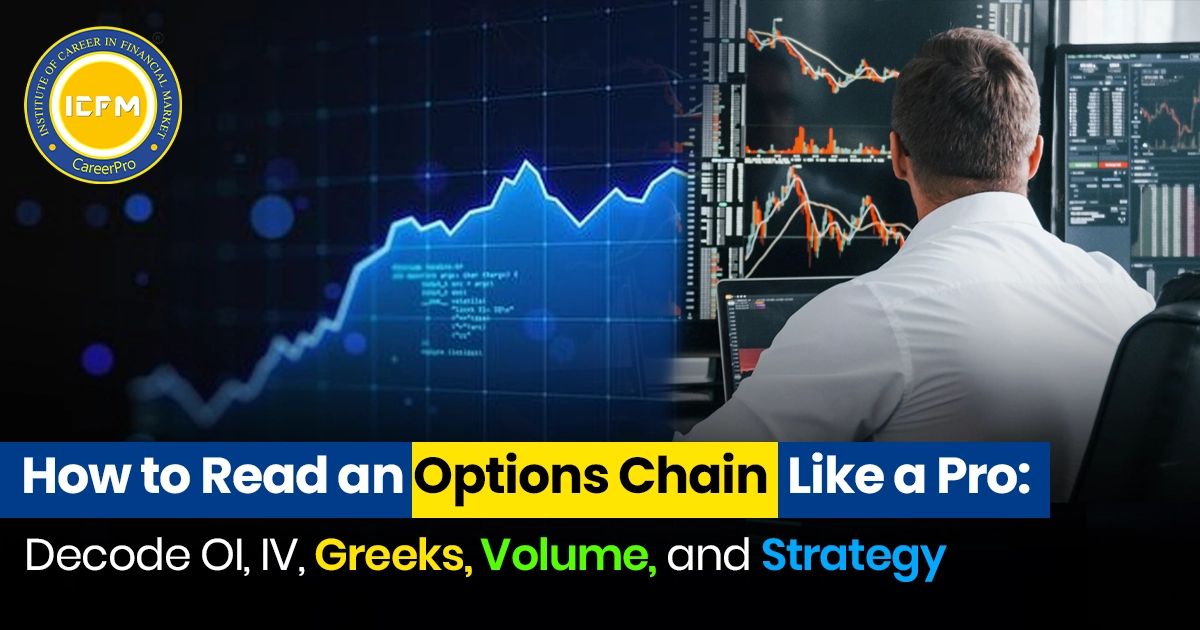Derivatives role in hedging: managing risk in volatile markets
Introduction
The management of risk through investment, corporation, and trade requires more caution than ever in the uncertainty of market environments. One of the most effective ways to avoid financial uncertainty is with hedging strategy used to offset potential losses in an investment or business operation. Derivatives play a role in hedging by providing instruments that allow market participants to transfer and mitigate risks.
In this blog, we'll discuss how derivatives work within the premise of hedging, what types of derivatives are common for better enhancement of risk management, and how these financial tools can help navigate through volatile markets.
So, what is Hedging?
Hedging is basically a risk management technique used for offsetting or minimizing some form of potential financial loss that comes as a result of market fluctuations. The concept of hedging entails the requirement to balance the negative price movements of an asset or liability with a position in a related asset.
For instance, it would be like an exporter firm that hedges against currency risk through an appropriate position in the forex market if there occur unfavourable currency fluctuations. Another example would be that of an investor hedging his or her equity portfolio in case of a market downfall.
Key Objective of Hedging:
- Reduced risk with no loss of potential for generating profits.
- Haven for corporate firms and investors during periods of high volatility.
Derivatives in Hedging
Derivatives are financial instruments that obtain their value through the price of an underlying asset. There are various widely used derivatives for hedging, which include futures, options, swaps, and forwards. These instruments allow investors and companies to hedge against certain risks while locking in a price. They will counterbalance other market exposures by taking a position.
Derivatives in Hedging: What Is It and Why Is It
The following describes how derivatives play a fundamental role in hedging.
1. Futures Contracts
Futures are standardized contracts in which the holder of the contract is obliged to accept delivery, or the seller to make delivery of an asset at an agreed-upon price and date. Such contracts are traded on exchanges, and businesses and investors use them as a method of locking future prices at the expense of risking price volatility in hedging.
How Futures are Used in Hedging
• Commodity Producers: A farmer may hedge her price for the wheat that she would sell in six months. She can use a futures contract to get money from selling the wheat, even if prices go down in the future because of a reduction in market volatility.
• Firms: An enterprise buying raw material, like oil, metals, or grain, may use futures to protect themselves against higher prices or shortages.
• Investors: An index fund portfolio manager exposed to the stock market will buy index futures to hedge potential decline in the market that at all times will ensure a more significant future position if the market falls and offset part of losses.
Futures are especially efficient due to the fact that they allow for very high accuracy in fixing future prices. However, they also entailed forcing margin accounts and daily mark-to-market adjustments, which means that participants must have their margin call ready in case of adverse movement in the market.
2. Options Contracts
Options are options, which give a holder the right but not an obligation to buy or sell an underlying asset at a given price called a strike price before a given date called the expiration date. Options are flexible hedging tools because they offer protection without any obligation to execute the trade. How Options in Hedging End
• Equitati hedging: Investors holding a portfolio of stocks will buy put options on an index for hedge protection against downside risks. Take an investor who is afraid of the movement of the market down as an example. Such an investor can buy puts on the S&P 500 index. In case the market goes down, the prices of the puts rise in return and thus mitigate the losses from the portfolio.
• Currency Hedging: An international business firm might employ currency options for hedging against an unfavourable movement of exchange rates. Example in this case: A US company expects to receive its payment in euros after three months. It can buy a euro put option to insulate itself from a possible fall in the value of the euro.
Flexibility is the biggest advantage options have over futures in hedging. Unlike futures, which require contract exercise, options leave the decision to the hedger whether or not to exercise. Of course, the option has a downside: namely, its premium, which can be expensive, especially when volatility is high.
3. Swaps
It is a bilateral agreement between two parties to exchange cash flows or financial instruments for a specific period. Swaps are customized contracts, and the most commonly used swaps for hedging purposes are interest rate swaps and commodity swaps.
How Swaps are Used in Hedging:
• Interest Rate Swaps: A firm which has undertaken a floating rate loan will most likely engage in an interest rate swap where their floating-rate payments are exchanged for fixed-rate payments. It can, therefore hedge against high interest rates. In the event of rising interest rates, the fixed-rate payer benefits because it is paying a lower rate than in the market.
• Commodity Swaps: A manufacturing entity that uses a large quantity of commodities like oil or natural gas may lock the price of these inputs for some period using commodity swap. It also means that the company will not be sensitive to the price shock at the market level, where the commodity prices begin to experience shock.
Swaps may also be flexible and thus may be tailor-made for the parties in question to satisfy the needs of each, thereby making it the best hedging technique in complex financial risks. Swaps, however, are widely OTC agreements and sometimes include negotiations between counterparts.
4. Forwards Contracts
In a forward contract, the parties agree on purchases or sales of some asset at some specific date in the future for a price agreed now, kind of like futures contracts but not standardized or exchange-traded.
How Forwards are Used in Hedging
• Hedging of foreign exchange: The company importing may use the forward contract to hedge against the potential transaction at a specific exchange rate so that it will not face any uncertainty with regard to the value of foreign currencies.
• Commodities Hedging: A firm may use forward contracts to hedge against purchasing a particular commodity at a specified time. This hedging avoids cost increases, especially those caused by market volatility on one's way toward committing oneself to purchase such a commodity.
On the one hand, forwards offer flexibility in size and date but are accompanied by a type of risk called counterparty risk since forwards are not traded on an exchange and is merely a private contract.
Hedging in Volatile Markets
In volatile markets, where price swings are unpredictable and market sentiment can change rapidly, hedging becomes even more crucial. Derivatives help mitigate risk during these turbulent times in several ways:
1. Locking-in of Profit Margins: The commodity or raw material price could be very volatile in this market, such that it gradually eats into their profit margins. It can lock in the price with futures or swaps and, therefore, enjoy predictable costs.
2. Currency Risk Hedging: For a multinational company exposed to foreign currencies, currency hedging becomes crucial. Options and forwards are forms of currency derivatives which allow companies to lock into the prevailing exchange rate so as to be protected against adverse shifts in the foreign exchange market.
3. Investment Portfolio Protection: Market volatility can result in huge losses for investors holding equities or any other asset class. Options, in general, and put options in particular, can be thought of as insurance against sudden market declines.
4. Interest Rate Risk Reversal: Companies and government agencies with floating-rate debt can transfer their floating interest rate to a fixed rate using interest rate swaps. This saves them from getting shocked by interest shocks that, when devastating, are likely to be devastating during a downturn in the economy.
Conclusion
Derivatives are considered the primary instruments in risk management, especially during volatile markets. They protect market participants against uncertainties of either market commodities, interest rates, exchange rates, or the price of equities by allowing them to hedge price fluctuations in these areas. There are varied ways of managing exposure to risk offered to businesspeople, investors, and traders through futures, options, swaps, and forwards with flexibility enough to keep their financial strategies in motion.
Each participant in the financial market should understand the proper application of derivatives for hedging. When applied appropriately, derivatives can be used to ride the storm during turbulent times, keep businesses afloat, protect assets from investors, and carry traders through flush times even in uncertain environments.









